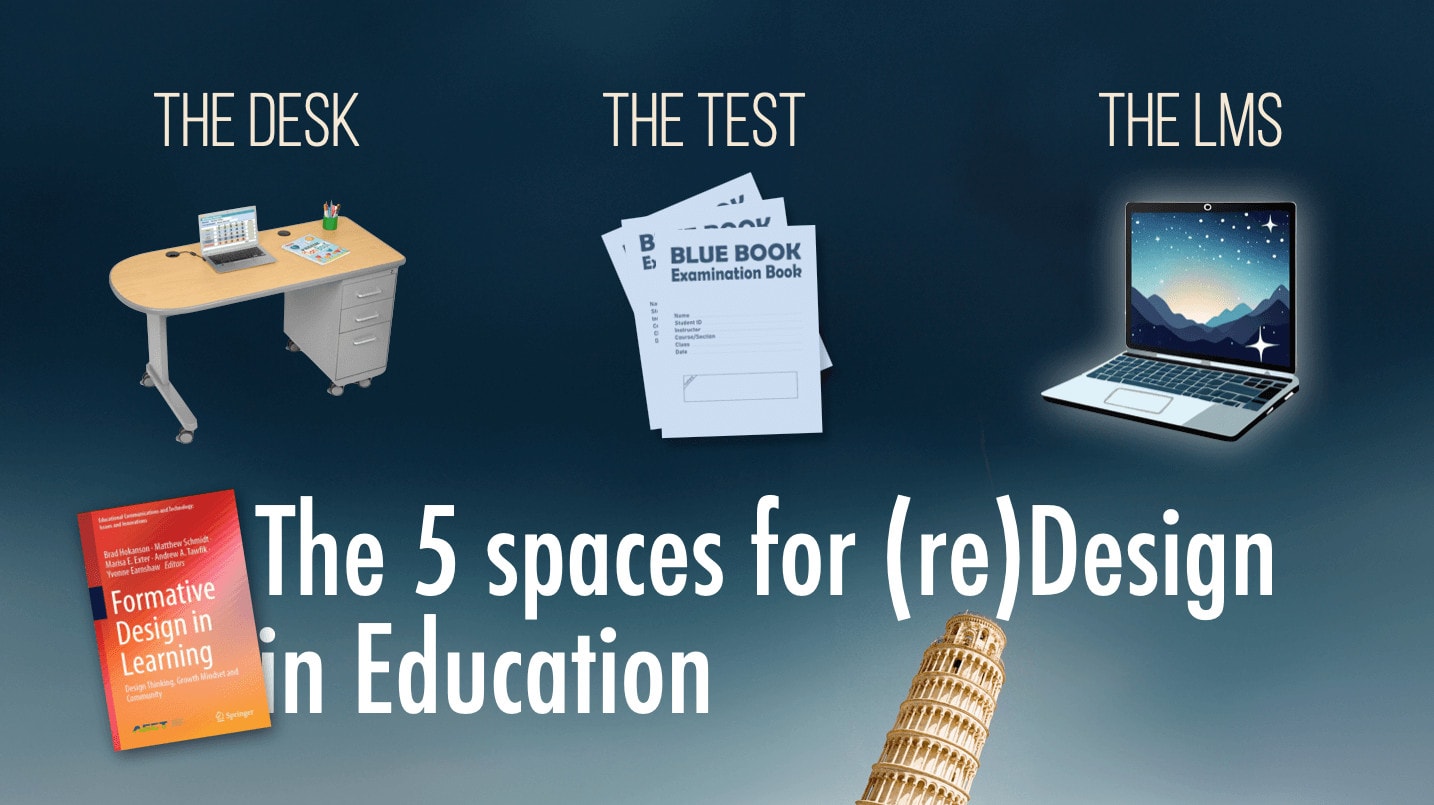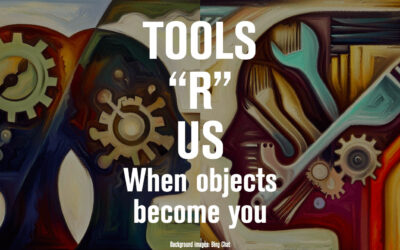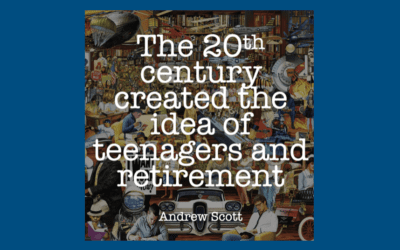What do a teacher’s desk, the PISA test and Learning Management Systems (LMS) have in common. Apart from being educational technologies, they are also the heart of a book chapter that Melissa Warr, Kevin Close and I just published in a book titled Formative Design in Learning: Design Thinking, Growth Mindset and Community.
In this chapter we argue that everything around us is designed – often intentionally, sometimes not. In an educational context this includes curricula, classroom layouts, and testing systems. Further we argued that seeing education as an artificial system gives us the power to redesign it for the better. Seeing schooling as an intentional design highlights that things don’t have to be the way they are. If standardized testing promotes unhealthy competition or learning management systems limit creativity, we can recreate them.
In this paper we also build on our previous work on the 5 spaces for design in education framework suggesting that it design in education focuses on 5 key spaces: artifacts, processes, experiences, systems and culture. For example, a teacher’s desk is an artifact, grading papers is a process, taking a standardized test is an experience, degree programs are a system, and beliefs about the role of technology in learning shape culture.
In this piece we illustrate how these spaces intersect through an analysis of the three above-mentioned educational technologies: the teacher’s desk, the PISA standardized test, and learning management systems. We highlight how the physical placement of a teacher’s desk can shape classroom roles and culture, and critique how the PISA test reflects and reproduces beliefs that students are economic resources. And, finally, we imagine how redesigning rigid learning management systems could better support networked, social learning models. Thorough this process we seek to reveal how educational designs are interconnected, opening up possibilities for reimagining education. What other ubiquitous designed elements in education deserve a deeper look? How might we redesign them? Read the full article to learn more about this perspective on education and design.
Complete citation and abstract given below:
Warr, M., Close, K., & Mishra, P. (2023). What Is Is Not What Has to be: The Five Spaces Framework as a Lens for (Re)design in Education. in B. Hokanson, M, Schmidt, M. E. Exter, A. A. Tawfik, & Y Earnshaw (Eds.) Formative Design in Learning: Design Thinking, Growth Mindset and Community. Educational Communications and Technology: Issues and Innovations. Springer. https://doi.org/10.1007/978-3-031-41950-8_24
Abstract: Design is everywhere. Recognizing how everything in education is designed, including systems and cultures, increases our agency to make changes on those designs. In this chapter, we introduce the five spaces framework which pro- vides an analytical tool for understanding the relationships among designed entities, shifting perspectives and offering new possibilities for (re)design. To illustrate the framework, we analyze three technologies in education: the teacher’s desk, PISA test, and learning management systems.





0 Comments